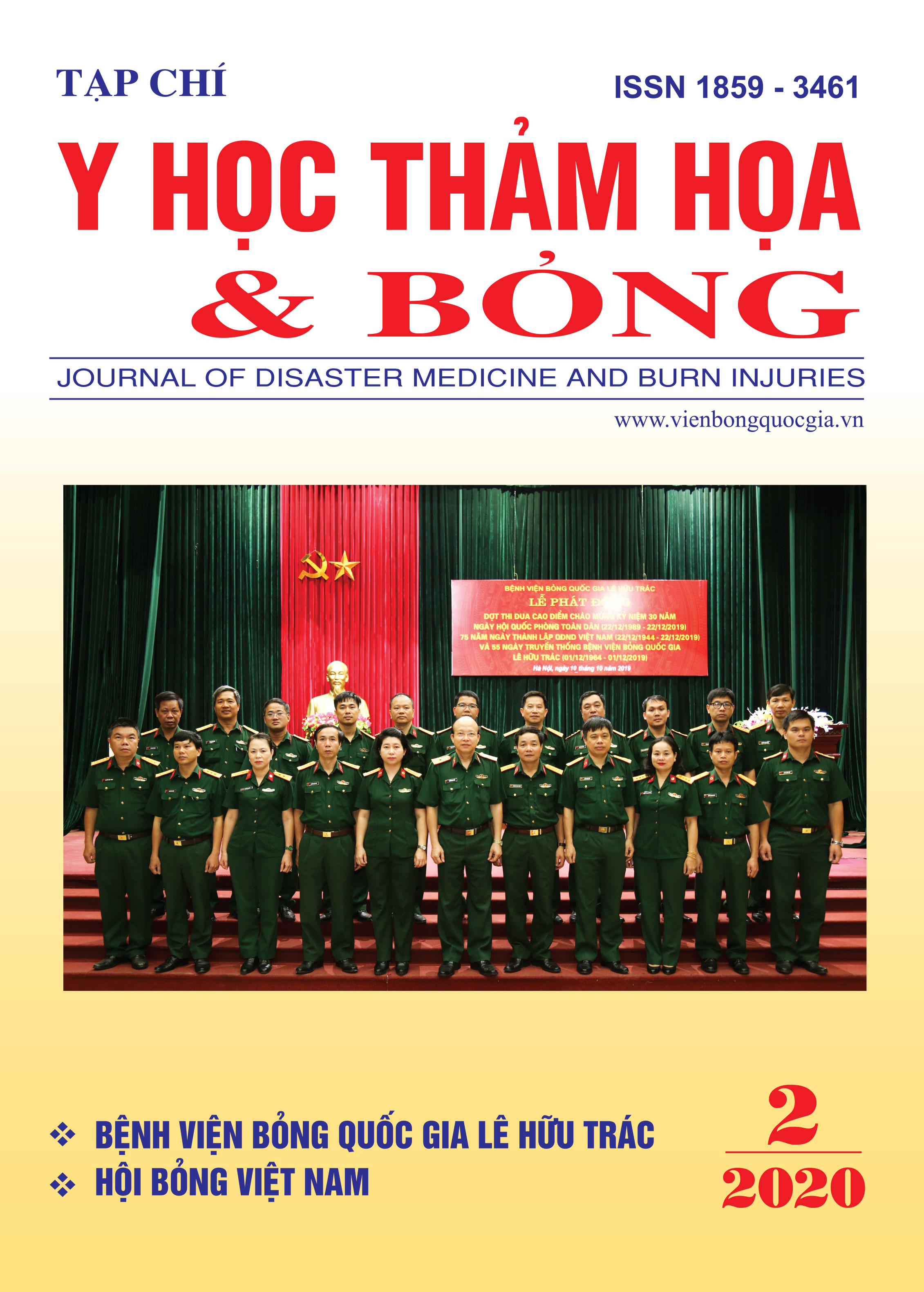Researching the effectiveness of intravenous patient controlled analgesia by Fentanyl after plastic and cosmetic surgery
Main Article Content
Abstract
Objectives: Evaluate the postoperative analgesic effect by intravenous patient-controlled analgesia with Fentanyl after plastic surgery and the safety of the therapy.
Subject and methods: A interventional, description, prospective study was conducted on 46 patients in the Reconstructive and Plastic Surgery Center of Le Huu Trac National Burn Hospital who had indicated to general endotracheal or laryngeal mask anesthesia from 05/2019 to 08/2019. Patients were from 18 to 60 years old with ASA I, II classification and without contraindication to fentanyl.
Results: The average VAS was always < 4 during the analgesia. Compared to VAS at Ho, the average VAS at rest and movement at other moments was similar. The average VAS at rest was 2.02 ± 0.58 at H0, which was lower than in the study of Seung Ho Choi in 2008 (7.0 ± 0.5); the difference was statistically significant with p < 0.05 because we infused Fentanyl before patients awoke and were removed the endotracheal tube or laryngeal mask, with Fentanyl amount in operation, it brought patients the optimal analgesic effect. The satisfaction rate was 100%. The therapy was safe without respiratory inhibition and circulation disorder. There were no cases with headache, dizziness, and pruritus, the rate of OAA/S4 sedation degree was 15.22% and the rate of nausea and vomiting was 6.52%.
Conclusion: Intravenous patient-controlled analgesia with a background infusion rate of Fentanyl 10mcg/hour was effective and safe after plastic surgery.
Article Details
Keywords
Fentanyl, intravenous patient controlled analgesia, plastic surgery
References
2. Jeffrey A. Grass (2005), "Patient-controlled Analgesia", Anesth Analg, 101 (5): pp. 44-61.
3. Apfel CC (2010), “Nausea and vomiting in day-case anesthesia: Rish score, prophylaxis and rescue therapy”. European Society of Anaesthesiology. 02RC2: pp. 1-7.
4. Chen CL et al. (1992), “The efficacy of intravenous fentanyl patient-controlled analgesia for postoperative pain relief”, Ma Zui Xue Za Zhi. 30 (4): 251-8.
5. Jihoon Hwang et al. (2020), ”Continuous Fentanyl Background Infusion Regimen Optimised by Patient-Controlled Analgesia for Acute Postoperative Pain Management: A Randomised Controlled Trial”. J Clin Med. 9(1): 211
6. Seokyung Shin et al. (2014), “Finding the 'Ideal' Regimen for Fentanyl-Based Intravenous Patient-Controlled Analgesia: How to Give and What to Mix?” Yonsei Med J. 55(3): 800-806.
7. Jong-Yeop Kim et al. (2013), “The efficacy of the time-scheduled decremental continuous infusion of fentanyl for postoperative patient-controlled analgesia after total intravenous anesthesia”, Korean J Anesthesiol. 65(6): 544-551.
8. Seung Ho Choi et al. (2008), “Comparison of Remifentanil and Fentanyl for Postoperative Pain Control after Abdominal Hysterectomy”, Yonsei Med J. 49(2): 204-210.


